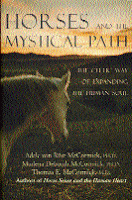
Solas
Strings in the Mountains Music Festival Park
Steamboat Springs, Colorado
August 13, 2004
Strings in the Mountains Music Festival Park
Steamboat Springs, Colorado
August 13, 2004
Website: Strings in the Mountains
Music Review by Kathleen Cunningham Guler
Solas — the name of this critically acclaimed band means “light” in Gaelic. On their tour stop at Steamboat Springs, Colorado’s Strings in the Mountains Music Festival Park this summer, Solas not only infused light and energy into their performance, they brought the whistling, cheering audience to its feet many times.
Solas is best described as “traditional contemporary Irish-American.” Like many other “traditional” Celtic artists, this band introduces elements of contemporary compositions in order to appeal to a wider audience. But while Solas draws on songs written by Woodie Guthrie, Bob Dylan and Dan Fogelberg — and the influence can well be heard — the band successfully gives the modern tunes a solid Celtic interpretation that will please those who crave the traditional sound.
The Solas ensemble includes bandleader Seamus Egan on flute, nylon guitar, electric guitar, mandolin, banjo, and low whistle; Mick McAuley on accordions and low whistle; Deirdre Scanlon on vocals; Winifred Horan on fiddle; and Eamon McElholm on acoustic guitar, piano and keyboards. Members hail from both sides of the Atlantic and have solo careers as well. Egan is lauded as a co-writer of Sarah McLaughlin’s Grammy-winner “I’ll Remember You.” Horan is both an Irish stepdance and all-Ireland fiddle champion who has played with powerhouse co-champion fiddler, Eileen Ivers.
This enormously talented five-member Celtic band quickly warmed to an audience that in turn fully embraced the band members’ masterful musician-ship. Played on a wide variety of traditional instruments, sparkling jigs and high-energy reels intermingled with poignant aires that cried of heartache and loss. Scanlon’s haunting vocals, reminiscent of Clannad’s Maire Brennan, and McAuley’s lightning-fast fingers on the button accordion highlighted a mesmerizing, magical performance to be long remembered. And don’t forget that sharp Celtic wit!
Swept by the power of the band’s music, the audience pounded away, stomping feet and clapping hands during the last few tunes, even inspiring a few to come to the stage and dance. It was impossible to keep from becoming a part of the spirit and the energy and the light. There was certainly a feeling that by the end, the audience was left craving for more!
Solas' website is at: http://www.solasmusic.com/






